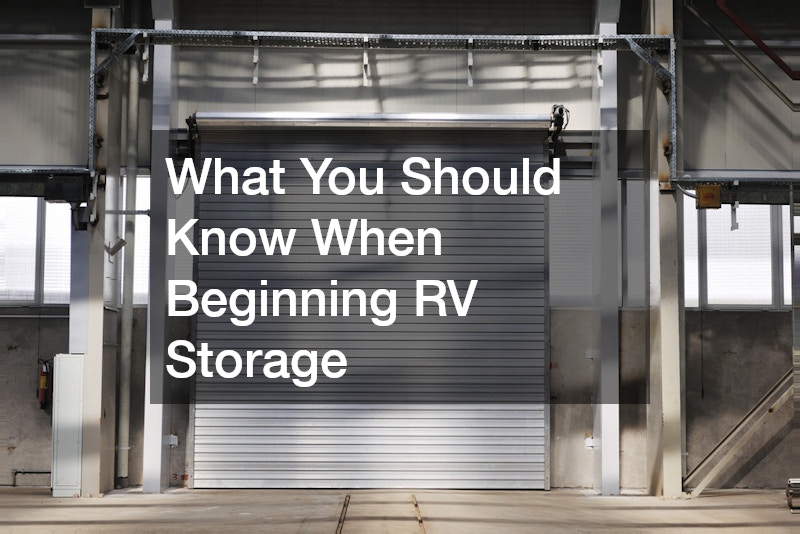Proper RV storage is crucial for maintaining the longevity and condition of your vehicle during periods of inactivity. With the right storage practices, RV owners can prevent unnecessary wear and tear, preserve the vehicle’s value, and ensure readiness for the next adventure. This article aims to guide you through the process of selecting appropriate storage options, preparing your RV for storage, and understanding the environmental challenges that may arise.
1. How Do I Choose the Right Storage Option for My RV?
1.1 Evaluating Indoor vs. Outdoor Storage
When deciding between indoor and outdoor storage, consider the level of protection your RV needs. Indoor storage offers superior protection against weather and potential vandalism, making it ideal for those in harsh climates or urban areas. However, outdoor storage may be more cost-effective and accessible, suiting individuals in milder climates with larger properties.
While indoor storage is generally more expensive, it can prevent costly damage due to moisture and sunlight exposure. Outdoor storage, on the other hand, requires the use of covers and consistent maintenance checks to ensure the vehicle remains in good condition. Assessing the weather conditions and security concerns of your area will help inform your decision.
Furthermore, consider how often you plan to access your RV. Indoor facilities may have restricted hours, whereas outdoor storage often allows greater flexibility. Balancing convenience with protection will help optimize your choice in storage.
1.2 Understanding Covered vs. Uncovered Storage
Covered storage offers a middle ground by providing a roof over your RV without the full enclosure of indoor storage. This option protects against direct sun, rain, and snow, reducing the risk of paint and roof damage. Additionally, it can extend the life of your RV’s exterior surfaces.
Uncovered storage, while the least expensive, leaves your RV exposed to all weather elements. This exposure can lead to faster deterioration, which necessitates regular maintenance and inspections. The affordability of uncovered storage makes it attractive, but owners must be diligent in managing potential environmental damage.
Understanding the specific needs of your RV, alongside the typical weather patterns of your location, will help determine whether covered storage is worth the investment over uncovered options. Evaluate the long-term costs and benefits to make an informed decision.
1.3 Determining Nearby Storage Facilities
Proximity is a vital factor when choosing an RV storage facility. Being close to home means more convenience, especially if you plan on accessing your RV frequently. Research facilities within a reasonable distance and compare their features, security, and reviews.
When evaluating a facility, consider factors such as security measures, hours of accessibility, and available amenities. Look for features like gated access, surveillance cameras, and on-site management, all of which enhance safety. Also, think about practicalities like the width of lanes and drive-up access for ease of maneuverability.
Finally, visit potential storage sites to ensure they meet your expectations regarding cleanliness and maintenance. A well-kept facility is likely to provide better care for your RV. Doing thorough research and inspections will help you feel confident in your choice of storage facility.
2. What Are the Essential Preparations for Storing an RV?
2.1 Pre-Storage Maintenance Checklist
Before storing your RV, conducting thorough maintenance is crucial. Start by cleaning the interior and exterior, ensuring no food or debris is left behind, which could attract pests. Regular checks of fluid levels, battery charge, and tire pressure will help prevent deterioration over the storage period.
It’s also essential to protect against potential leaks by inspecting seals and reinforcements. Add fuel stabilizer to the gas tank and run the engine to distribute it through the system. These steps help maintain engine parts and prevent fuel degradation during long storage periods.
Consider lubricating moving parts, such as hinges and slides, to avoid stiffness or damage. Performing these tasks will ensure your RV remains in optimal condition and is ready for use when you retrieve it from storage. A consistent maintenance routine will prolong your RV’s lifespan significantly.
2.2 Securing Your RV for Storage
Security during storage is paramount in protecting your RV from potential theft or damage. Use high-quality locks on doors, windows, and hitches to deter unauthorized access. Consider installing an alarm system or GPS tracking device for additional security.
Covering your RV with a durable tarp or fitted cover not only shields it from weather elements but also discourages tampering. Additionally, placing wheel locks or removing wheels altogether can prevent theft and unauthorized movement. Regularly checking on your RV, even in storage, can further ensure its safety.
Furthermore, maintaining insurance coverage while the RV is in storage provides a safety net against unforeseen incidents. Communicate with your insurance provider to understand any changes to coverage that can affect your RV while it is not in active use. The combination of physical security measures and proper insurance will provide comprehensive protection.
Conclusion
Beginning RV storage involves a series of decisions and preparations to ensure your vehicle remains in excellent condition. From selecting the right type of storage to engaging in thorough pre-storage maintenance, each step is vital to protecting your investment. By following the guidance in this article, RV owners can cultivate habits that promote safe and effective storage practices, guaranteeing that their beloved vehicles are always ready for the next journey.
.


